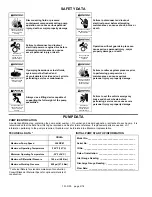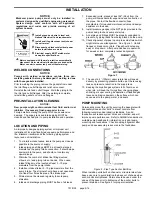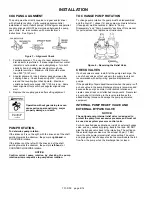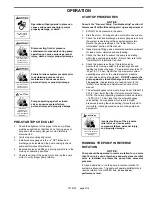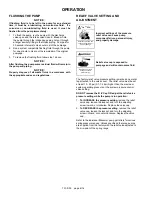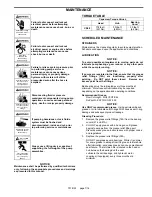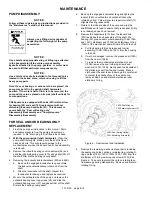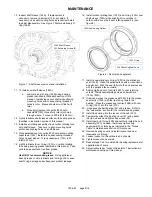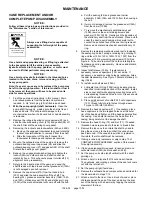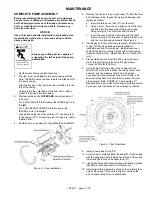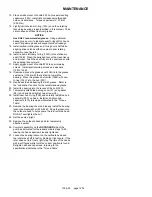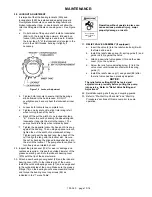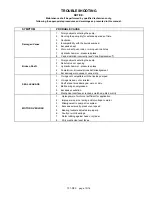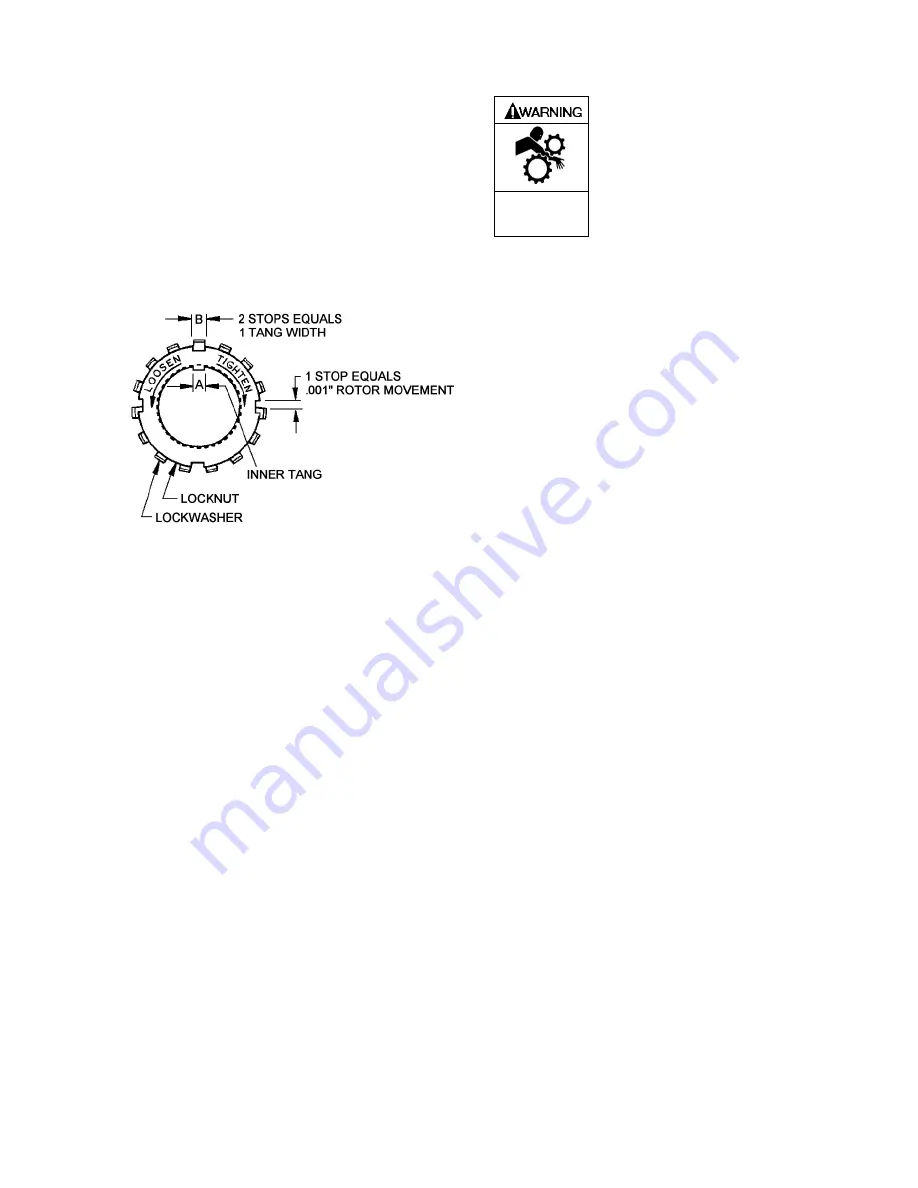
102-A00 page 13/16
MAINTENANCE:
28. LOCKNUT ADJUSTMENT
It is important that the bearing locknuts (24A) and
lockwashers (24B) be installed and adjusted properly.
Overtightened locknuts can cause bearing failure or a
broken lockwasher tang. Loose locknuts will allow the
rotor to shift against the discs, causing wear. See Figure
10.
a. On both ends of the pump shaft, install a lockwasher
(24B) with the tangs facing outward, followed by a
locknut (24A) with the tapered end inward. Ensure
the inner tang "A" of the lockwasher is located in the
slot in the shaft threads, bending it slightly, if
necessary.
Figure 10 Locknut Adjustment
b. Tighten both locknuts to ensure that the bearings
are bottomed in the head recess. DO NOT
overtighten and bend or shear the lockwasher inner
tang.
c.
Loosen both locknuts one complete turn.
d. Tighten one locknut until a slight rotor drag is felt
when turning the shaft by hand.
e. Back off the nut the width of one lockwasher tang
"B". Secure the nut by bending the closest aligned
lockwasher tang into the slot in the locknut. The
pump should turn freely when rotated by hand.
f.
Tighten the opposite locknut by hand until it is snug
against the bearing. Then, using a spanner wrench,
tighten the nut the width of one lockwasher tang.
Tighten just past the desired tang, then back off the
nut to align the tang with the locknut slot. Secure
the nut by bending the aligned lockwasher tang into
the slot in the locknut. The pump should continue to
turn freely when rotated by hand.
29. Inspect the grease seal (104) for wear or damage and
replace as required. Grease the outside diameter of the
grease seal and push it into the inboard bearing cover
(27A) with the lip of the seal outward.
30. Attach a new bearing cover gasket (26) and the inboard
bearing cover (27A) to the inboard side of the pump.
Install the outboard bearing cover (27) and a new gasket
to the outboard side of the pump. Make sure the grease
fittings (76) on the bearing covers are accessible. Install
and torque the bearing cover capscrews (28) as
indicated in the “Torque Table”.
Operation without guards in place can
cause serious personal injury, major
property damage, or death.
Do not operate
without guard in
place.
31.
RELIEF VALVE ASSEMBLY (if equipped)
a. Insert the valve (9) into the relief valve body(6) with
the fluted end inward.
b. Install the relief valve spring (8), spring guide (7) and
guide rod (45) against the valve.
c.
Attach a new relief valve gasket (10) and the valve
cover (4) on the cylinder.
d. Screw the relief valve adjusting screw (2) into the
valve cover until it makes contact with the spring
guide (7).
e. Install the relief valve cap (1) and gasket (88) after
the relief valve has been precisely adjusted.
NOTICE:
The relief valve setting MUST be tested and
adjusted more precisely before putting the pump
into service. Refer to "Relief Valve Setting and
Adjustment"
32. Reinstall coupling, shaft key, and coupling guards.
33. Refer to “Pre-Start Up Check List” and “Start Up
Procedures” sections of this manual prior to pump
operation.


